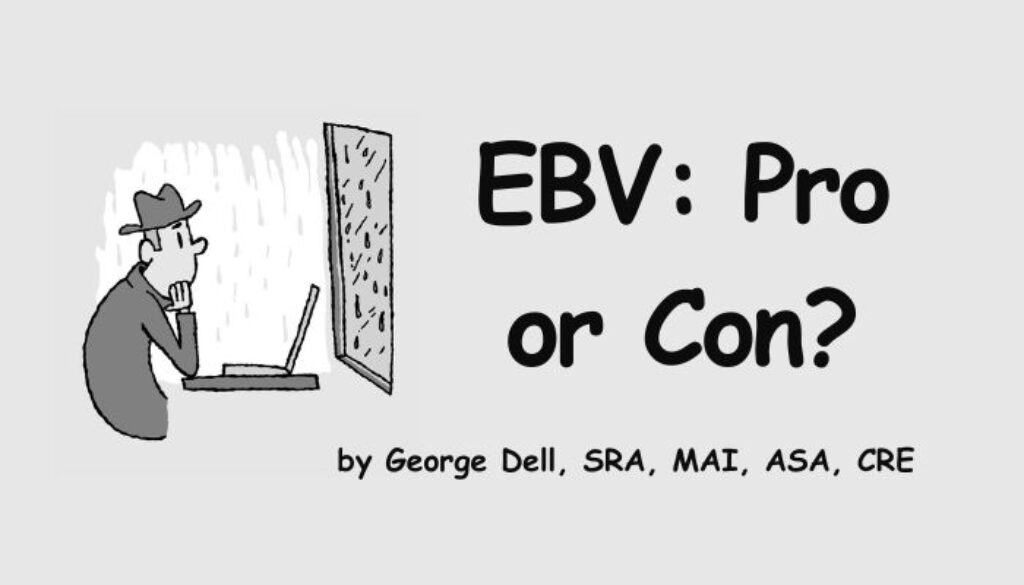EBV (Evidence Based Valuation) principles continue to update from legacy “appraisal” practices. Here we hope to have a quick look at the upsides and downsides of EBV, compared to traditional, judgment-based “methods and techniques.”
Editor’s Note: This is Standards, part 3.16 of George Dell’s series on How Do I Move to EBV? Links to the earlier posts are here.
The fundamental difference is that EBV focuses on market measurement, rather than comparing comps. Legacy methods were developed around the 1940s, designed to recognize the big challenge: get four or five ‘good’ comps. A ‘good’ comp is one that is available and ‘similar.’ (Everyone knows what a similar comp looks like, of course!)
EBV is a subset of Data Science. Data Science has some key elements:
- Complete, or near complete data is available, making samples unnecessary;
- The challenge is to understand what can be relevant, and how to interpret;
- Computer power enables instant calculations, and graphs for visualization;
- A field-related expert is required, with an understanding of modeling;
The Pros. EBV:
- Minimizes subjective judgment, augmenting it with objective, factual logic.
- Supports reproducibility, which in turn enables audit in place of subjective review.
- Enables risk and reliability scoring, dynamically integrating with fintech applications.
- Speeds work and personal satisfaction for appraisers and asset analysts.
- Promotes diversification, eliminates bias hazard, and simplifies entrant training.
EBV also simplifies underwriting, portfolio and risk management, and public policy regulatory issues.
The Cons. EBV:
- The new learning, to use EBV, triggers your natural resistance to change, and the resulting bias.
- Requires some unlearning of traditional practices, particularly that of “picking comps.”
- Requires greater use of critical thinking, critical analysis, and even skilled skepticism.
- Places more responsibility on the actual valuer’s competence, not less.
- Employs more sophisticated analytical software and tools.
Current regulations, appraisal standards, and user expectations enforce a great inertial weight on progress. Outdated embedded practices and even “advanced analytics” education misdirect from the simplicity and clear path of data science.
As an example: recall that in USPAP, the appraiser is required to do what peers do, and do what users expect – not what provides better results!
The real sweeping solution can only come from regulatory reform. The reform must be based on valuation reliability, measurable risk, and public policy of regular (annual?) bank collateral updates.
And what can an individual appraiser do?
Certain parts of the EBV process can be immediately and usefully used. The price-indexing model can be used separately, done in a very few minutes. It clarifies comp selection, provides a time adjustment, and the USPAP required ‘market analysis.’
There is a great reason to get a head start on the coming changes for valuation, and learn new methods today, in practice. The time to start is now, while there is time!

October 7, 2023 @ 2:35 pm
George, thank you for the wisdom and the challenge! Clearly I need to rethink some of my philosophy on comps. I appreciate the advice!
October 9, 2023 @ 11:52 am
You can make box and whiskers plots and run correlations and regressions until you’re very tired, but the bank reviewer will still ask, “where’s your adjustment grid and made-up quantitative adjustments?” The only regulatory reform on the horizon is to further erode appraisal requirements: more evaluations, higher de minimis limits, property inspections instead of appraisals, and further substitution of investors who don’t require appraisals vs. those who do.